Archaeology
You are here
Archaeology
Introduction:- The exhibits of the newly renovated section are mainly of sculptures ranging from the third century B. C. to the late medieval period, displayed in three big halls on well-designed pedestals under both natural and artificial lighting conditions. The portion of an Asokan pillar brought from Patna Museum, has been regarded as the earliest specimen of the section. The heavy and crude Naga and Yaksha images collected from the surrounding area of Bhubaneswar comes next. Among other notable sculptures the Buddha image of Khadipada, Amoghasidhi of G. Udayagiri, Lokanatha from Bhubaneswar, Jaina Tirthankaras from Podasingidi and Charampa, Brahmanical figures like Sapta Matrukas from Dharmasala, Dikpala figures from Bhubaneswar, Krishna-Vishnu from Dharmasala and a number of Puranic panels and Gopinath images from different parts of the State. A brief account of each school of sculptures is given below:-
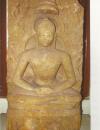 |
MahaviraThe fourth figure is often regarded as Mahavira, the 26th Tirthankara of the Jainas in view of the fact that its symbol lion is represented below the pedestal. It stands in Kayotsarga pose on a double-petalled lotus pedestal duly flanked by Chauri bearers close to the pedestal and flying Gandharvas with garlands in hands at the top. The face of the figure is badly damaged. The stele has an oval halo and the Kevala tree is traced at its usual place. |
 |
Buddhist AntiquitiesBuddhism in Odisha is a subject of absorbing interest as the contribution of Odisha to the domain of Buddhist culture over the ages is unfathomable. The great Kalinga war that transformed the Chandasoka' to 'Dharmasoka' has brought about remarkable changes in the history of Buddhism resulting in erection of monasteris, stupas, Viharas and Mahaviharas and other relics associated with this great religion. |
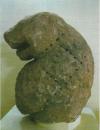 |
LionThe front portion of a colossal lion that displayed in the entrance hall of the Museum building was dug out of a pit about 40 feet from northern door of the Bhaskaresvara temple where it had been buried with four pieces of stones on four sides of it. Its weather-beaten surface, that visible above the ground clearly reveals that it is made of coarse grained sand stone, a material commonly found at the vicinity of Bhubaneswar. |
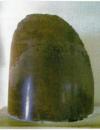 |
Portion of an Asokan pillarThis fragment of an Asokan pillar was brought from Pataliputra (modern Patna) and now displayed in the first hall of the Archaeology Gallery. Highly polished, tall and tapering and well-proportioned columns were erected at convenient places of his empire in order to propagate the tenets of Buddhism among the mass. These pillars are made of Chunar sandstone which is famous for its lusturous polish. |
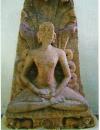 |
AmoghasiddhiThe colossal image of Amoghasiddhi carved out of a piece of sandstone originally found in G. Udayagiri of Phulbani district is now under display in the Odisha State Museum. The conception of Amoghasiddhi belongs to Vajrayana school of thought and the Nepalese Buddhists consider this deity as the first Dhayni Buddha in order. |
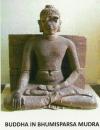 |
BuddhaThis image was brought from the village Khadipada in Bhadrak district, a famous site of old Mahayanic school. The Buddha in Bhumisparsa mudra consists of mainly three separate blocks (at present broken into four parts), but it reveals a great success of plastic art with broad shoulders, long and round hands, smooth and fleshy chins. It has pronounced solidarity and weight. Unfortunately the left hand and the face are broken. |
